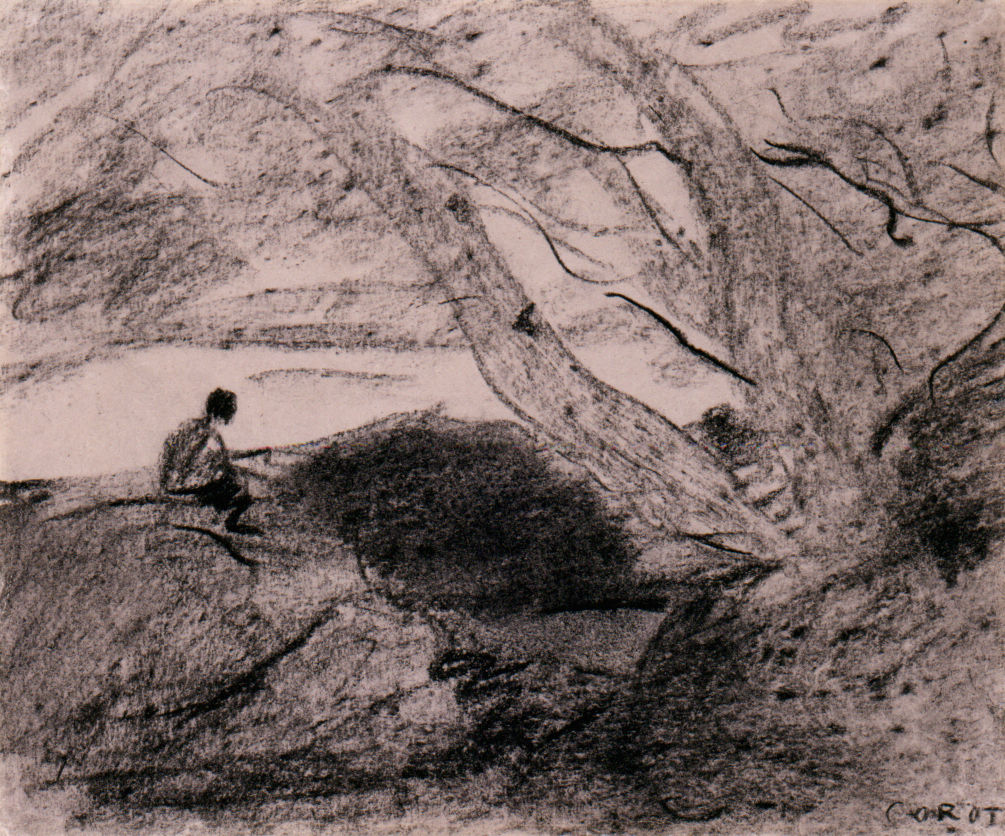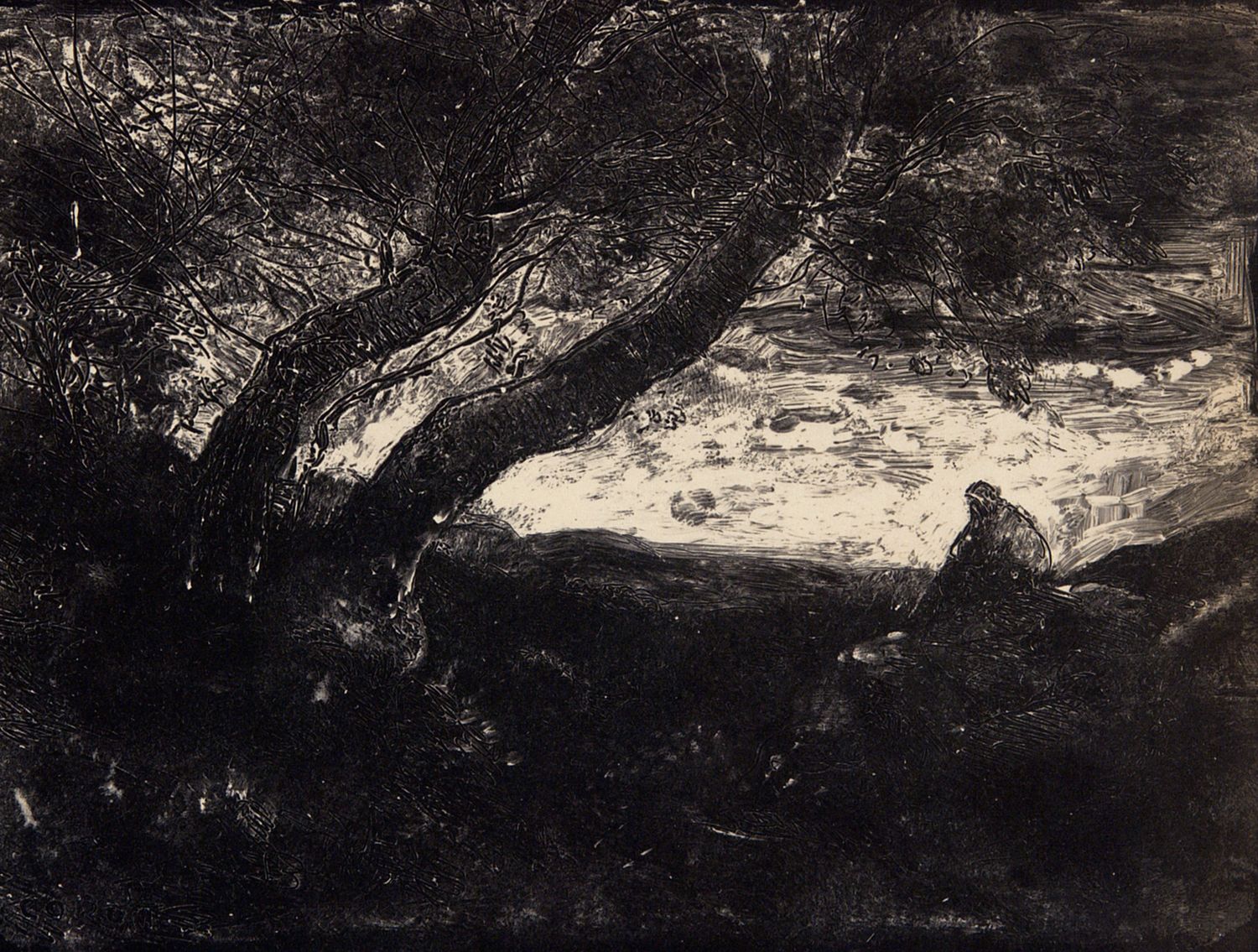
Where are They Now? Grunwald Center Works on View at the Getty Museum
Ten important works from the Grunwald Center’s collection are currently on view in the exhibition, Noir: The Romance of Black in 19th-Century French Drawings and Prints, which will be open at the Getty Museum until May 15, 2016. The exhibition explores how ideas about psychological interiority and imagination developed in tandem with new technologies for representing black during the Industrial Revolution. These advances prompted artists to pursue dynamic iconographic and narrative approaches to depicting landscapes, night scenes, dream states, the uncanny, and the everyday. This interest in tonalism, evidenced in both prints and drawings produced with growing frequency after 1850, was a contributing factor to the subsequent emergence of Modernism.
The Grunwald Center’s loans constitute a significant subset of the works on display, and they help illustrate many of the important arguments advanced within this notable reassessment of 19th century art and technique. The two works by Jean-Baptiste-Camille Corot illustrate the fluidity that subsisted between prints and drawings for artists interested in exploring the dramatic effects of darkness. One of these works is in fact a charcoal study for the other, a celebrated cliché-verre. Meaning glass negative in French, cliché-verre referred to a hybrid photographic process which transferred a design produced on a glass matrix onto photosensitized paper. Depicting a small figure caught in a moment of reverie atop a rocky outcropping set underneath the canopy of jaggedly sketched trees, the scene demonstrate the degree to which the genre of landscape enabled experimental fusainistes (charcoal draftsmen) to enter into a productive dialogue with the creative printmaking strategies fostered by the etching revival of the 1860s.


In the wonderful catalog accompanying the exhibition, curator Lee Hendrix remarks on the degree to which the tonal black medium of lithography was linked to a particular capacity to unleash the pathos of shadows as well as the more eccentric aspects of the artist’s imagination. Perhaps nowhere is this latter point more evident than in Rodolphe Bresdin’s The Flight into Egypt (1855), a remarkable image wherein the danger confronting the Holy Family is translated into an eerie landscape populated by dead trees, a rushing river, and wildlife hidden within the shadows. The proliferation of knots dotting the gnarled trees and their spidery branches resemble eyes which spy on the escapees from every angle. Eschewing the smudgy, shady qualities of lithographic crayon for the precision of lithographic pen, Bresdin’s image demonstrates the variety of styles that the fascination with graphic darkness encompassed.

This interest in the fantastical and nightmarish never fully eclipsed a commitment to realism. Honoré Daumier’s Rue Transnonain, Le 15 Avril 1834 reminds us of the lasting impetus placed on artists to confront sobering political and social actualities. In the work, Daumier employs black lithographic crayon to shed light on the violent underside of contemporary politics. Depicted within the print are tenement dwellers murdered by the police in the wake of Parisian civil unrest. At the center of the image, a dead middle-aged man, whose defenselessness is underscored by his state of undress, has collapsed on top of the murdered infant whom he presumably tried but failed to protect. The two additional bodies partially obscured by the shadows on the image’s edges remind the viewer that darkness was not merely a visual metaphor for a tormented state of mind. It was also a response to formative aspects of lived experience confronting artists and their audiences throughout the century.





